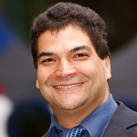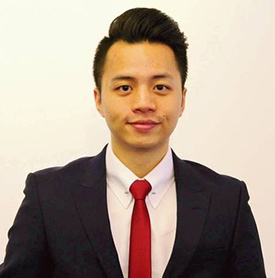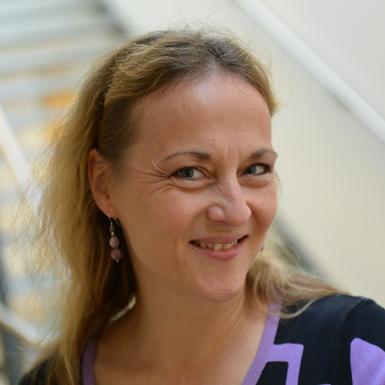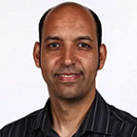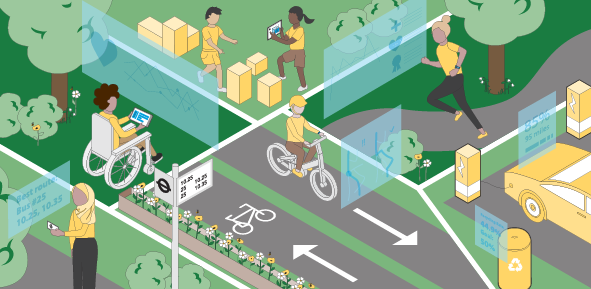
Submitted by Anonymous on Tue, 04/10/2022 - 12:12
The century-old Moorfields Eye Hospital is relocating from its current home in London’s Old Street to a two-acre site at St Pancras Hospital, in the King’s Cross area. The move brings opportunity to use digital technologies (AI, analytics, digital twins) to innovate service provision to NHS patients and redesign hospitals and the wider health ecosystem. Cambridge researchers worked with Moorfields clinicians and management to explore how Moorfields are planning service transition fit for a digital future. If a smart hospital aims to achieve better health outcomes and improved productivity at lower cost and with superior patient/user satisfaction, what technologies can be included in the design?
Moorfields is the leading provider of eye health services in the UK and a world class centre of excellence for ophthalmic research and education. The new hospital, scheduled to open in 2026, will create an integrated eye-care, research and education facility with the aim of facilitating improvements in people’s sight.
The Cambridge-based research team worked with multiple stakeholders – asset owners, management, service providers, and clinicians – to better understand how digital transformation of the built environment creates new opportunities to enhance and improve the services provided to patients in the new smart hospital. Digitalisation of the medical sector was already underway, in the exploration and implementation of AI and machine learning, cloud technologies, virtual platforms, telemedicine and other digital technologies. Researchers wanted to see how different digital technologies (telemedicine, AI, and digital twins) may enable service innovation, and what the implications could be for the future design, construction, and planned operation of the new smart eye hospital: ‘Oriel’ – a joint venture between Moorfields Eye Hospital, UCL and Moorfields Eye Charity.
The rapid response to delivering services during COVID-19 through telemedicine became an important part of the study, encouraging researchers to explore how digital transformation during/post COVID might inform the reconfiguring of care provision around the planned physical hospital hub at Moorfields. This multi-disciplinary research project drew on service innovation, ecosystem dynamics, and digital transformation in putting visually-impaired patient wellbeing at the heart of service delivery across the new hospital building and wider ecosystem.
Big picture
Sight loss is an increasing problem. By 2050 it’s estimated that four million people will be living with sight loss in the UK. When the project began in 2019, the potential for AI and digital technologies to push the boundaries of eyecare, with new possibilities for treatments and perhaps cures, was under consideration. To leverage these opportunities, Moorfields is designing and constructing a smart hospital of the future.
The new hospital will host state of the art technologies (e.g., telemedicine) and provide more efficient and advanced eyecare. The process of transitioning the current service into the future service is a significant challenge that Moorfields needs to overcome. First, the physical relocation of any hospital is an enormous task. Moving an eye hospital, where the visually-impaired patient community has a more complex relationship to the digitally-transformed built environment, presents extra challenges. Second, the services provided to patients by Moorfields also need to be reconfigured into the future service model. This service model is enabled by digital technologies and across different stakeholder ecosystems (clinicians, technicians, and caregivers). From the outset, it was evident that each stakeholder group would need to adjust, to work in new ways and take on different roles.
In a cross-disciplinary and collaborative environment, the Cambridge research team worked with colleagues at Moorfields to explore these challenges and issues in transitioning service to the Smart Hospital of the Future. Catalysed by the COVID-19 pandemic, researchers also captured data on service transformation at Sheba Medical Center, Tel Aviv, providing opportunities for comparative learning about change in telemedicine. (Aspects of this work are reported as part of the Digital Twin journeys series.)
The project
Researchers investigated the potential of digital technologies as enablers of the Smart Hospital of the Future. The scope of enquiry included the integration of telemedicine in healthcare practices and the implications for designing the physical environment of the smart hospital as part of the care ecosystem across hospitals, community health centres, and home care.
Initial research questions included:
- How can AI, digital twins, and telemedicine innovate healthcare services?
- What are the implications for designing the physical environment of smart hospitals?
- How can ecosystem partnerships facilitate rapid adoption through collaborative innovation?
Combining a review of existing literature (yielding a framework for analysis), extensive interviews with experts including hospital managers, clinicians, telemedicine specialists and architects (the core data), and engagement with service users via social media platforms (supplementary data), the researchers generated findings about real-time transformation (on the COVID-19 frontline) and insight on how to design a Smart Hospital inclusively with reference to cutting-edge technology and digital twins.
How are telemedicine and AI transforming service provision to visually-impaired patients at the organisational frontline? In particular, the researchers investigated the rapid and unprecedented adoption of video consultations in innovating ophthalmic services during the COVID-19 pandemic, and how emerging risks during a crisis shaped service innovation at organisational frontlines. Researchers considered the implications of such rapid adaptations for Moorfields’ future service provision and business models post-COVID.
Beyond this, the team worked with Moorfields’ digital service hub to explore how other technologies – especially surrounding telemedicine – shape the design and built environment of the future smart hospital. Digital technologies can help clinicians provide better, more accurate, efficient and cost-effective care for patients, and inform the purpose-built hospital space with a new approach to service delivery. This includes developing new ways to support the different centres that work with Moorfields.
Finally, the project explored how these transformations necessitate a service transition effort impacting the user journey of the future. The research team worked with stakeholders at the Moorfields building-in-the-making to determine how best to deploy digital technologies to support staff and patients, and how the shift to the uptake of digital technologies around telemedicine and AI impact Moorfields’ service provision. Such changes also impact the ecosystem of care providers and lead to new responsibilities and roles being formed.
Additionally, researchers sought to stimulate collaboration between younger, smaller start-ups and larger, more established companies up the value chain. Focussing on the transitioning service journey for the visually impaired, researchers built upon engagement between NHS Moorfields Eye Hospital and smaller, innovative companies with expertise in mobile-based AI and indoor/visual tracking, to aid patients’ navigation to and within the future hospital building. This aspect of the research also offered a route to connect with CDBB Digital Twins research.
For more about the research process, outputs, and impact, visit the Project Page.
Meet the research team
“When you combine the UK’s planned expansion of 40 new hospitals in 10 years with the unexpected catalyst provided by COVID-19, this research on digital service transformation for the Smart Hospital of the Future could not have been more timely. The research leveraged a once-in-a-generation opportunity for step-change improvement in healthcare.”
Professor Michael Barrett
Dr Edwin Lee, Research Associate in Digital Innovation and Policy, Cambridge Judge Business School, University of Cambridge: e.lee@jbs.cam.ac.uk
Professor Eivor Oborn, Professor of Healthcare Management, Warwick Business School, Research Fellow at Cambridge Judge Business School: Eivor.Oborn@wbs.ac.uk
Dr Karl J Prince, Director of Knowledge Innovation at Cambridge Digital Innovation, Hughes Hall, Cambridge Judge Business School: cdi@hughes.cam.ac.uk
Find out more
The process and outcomes of this research are detailed in the corresponding project page.

